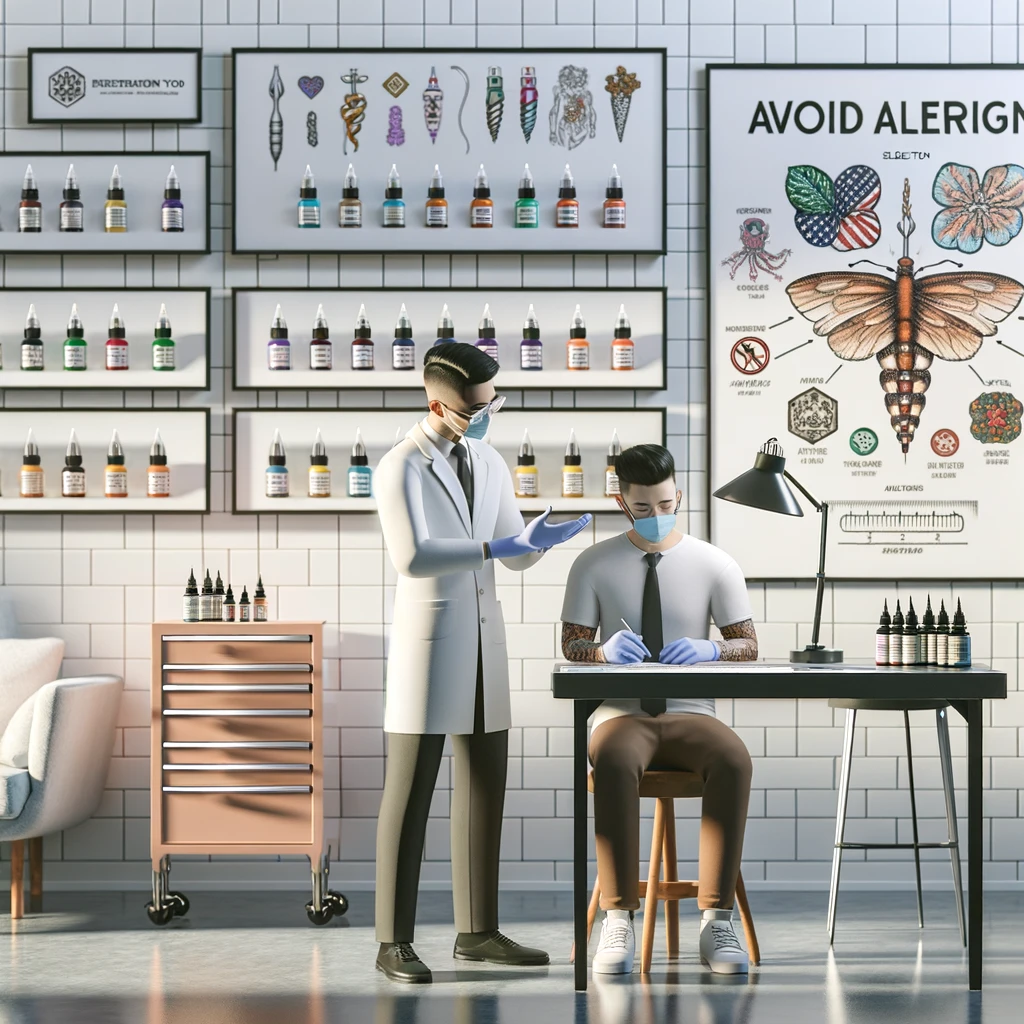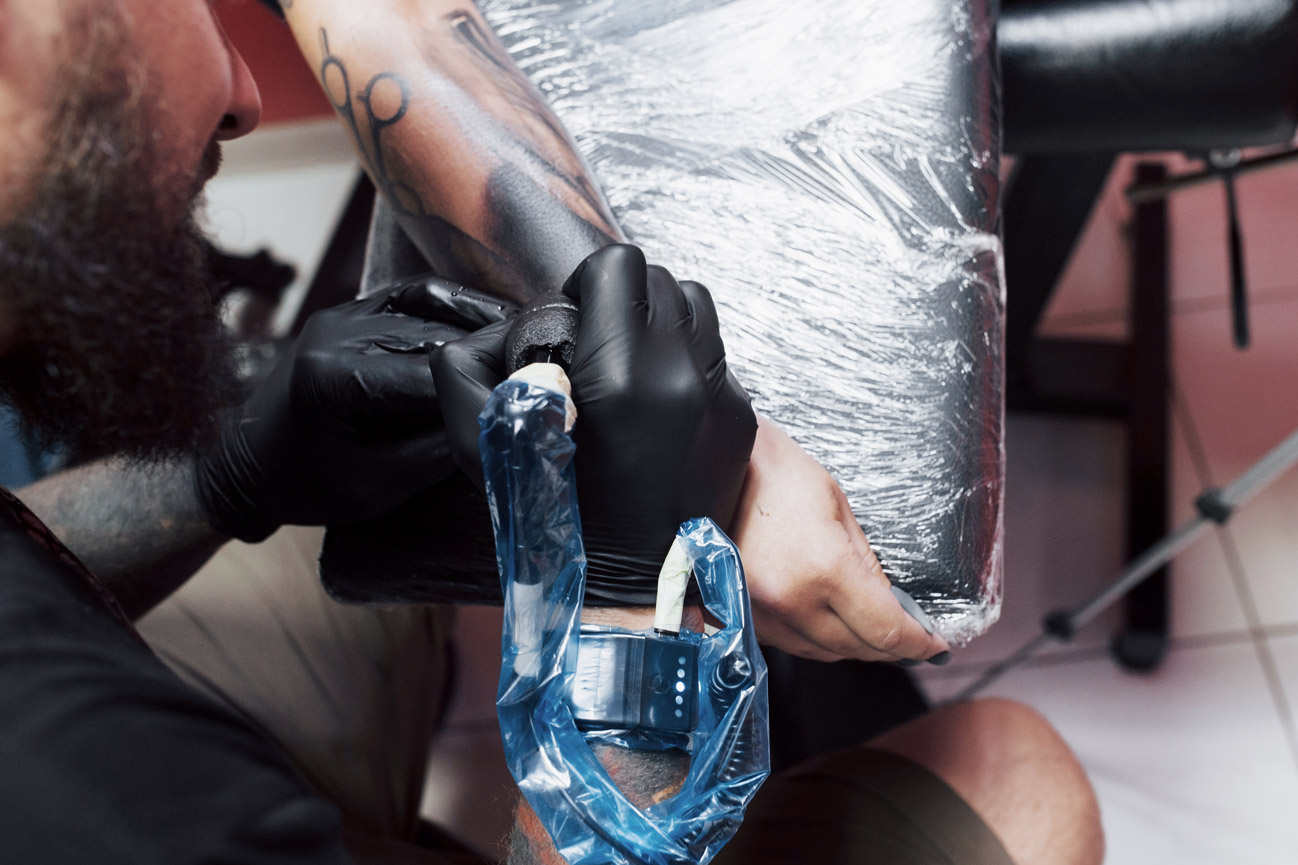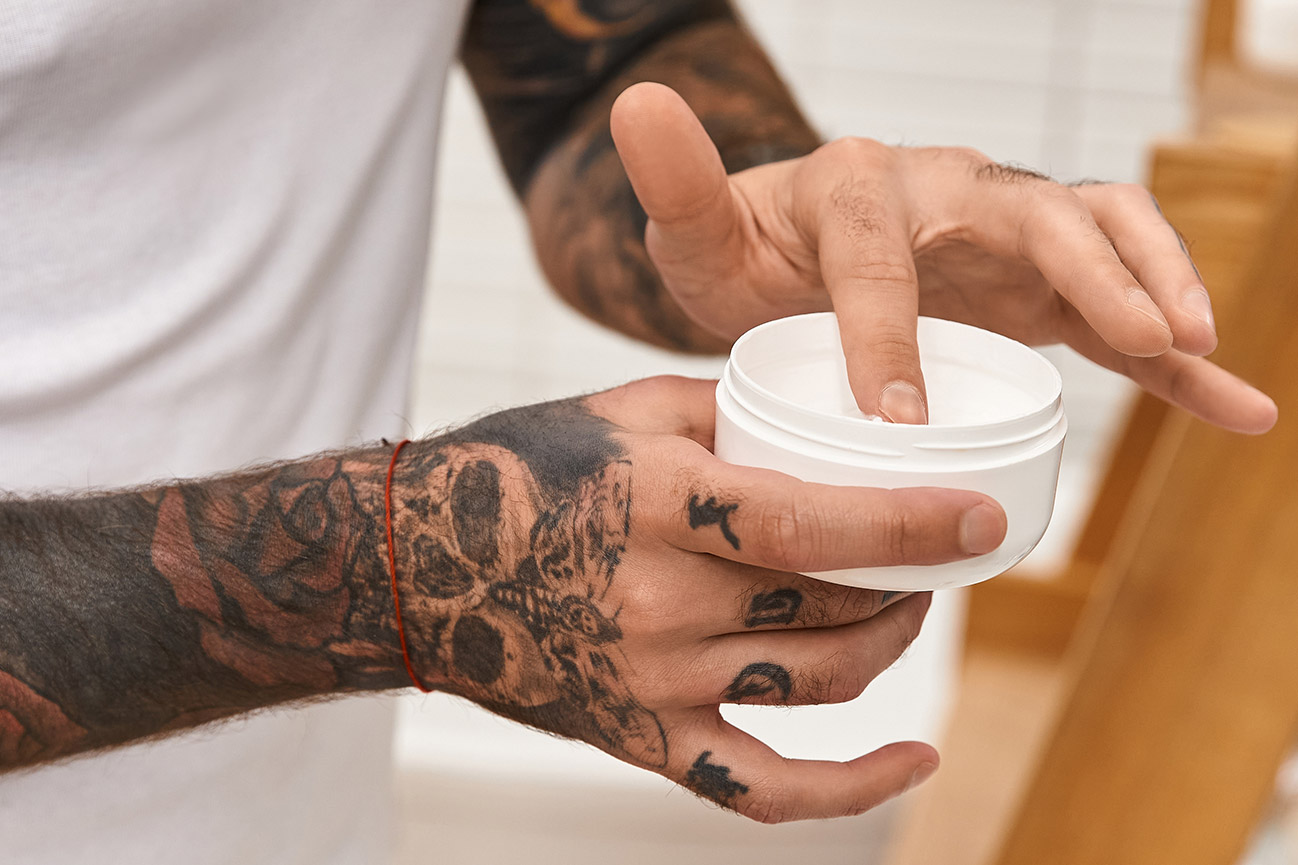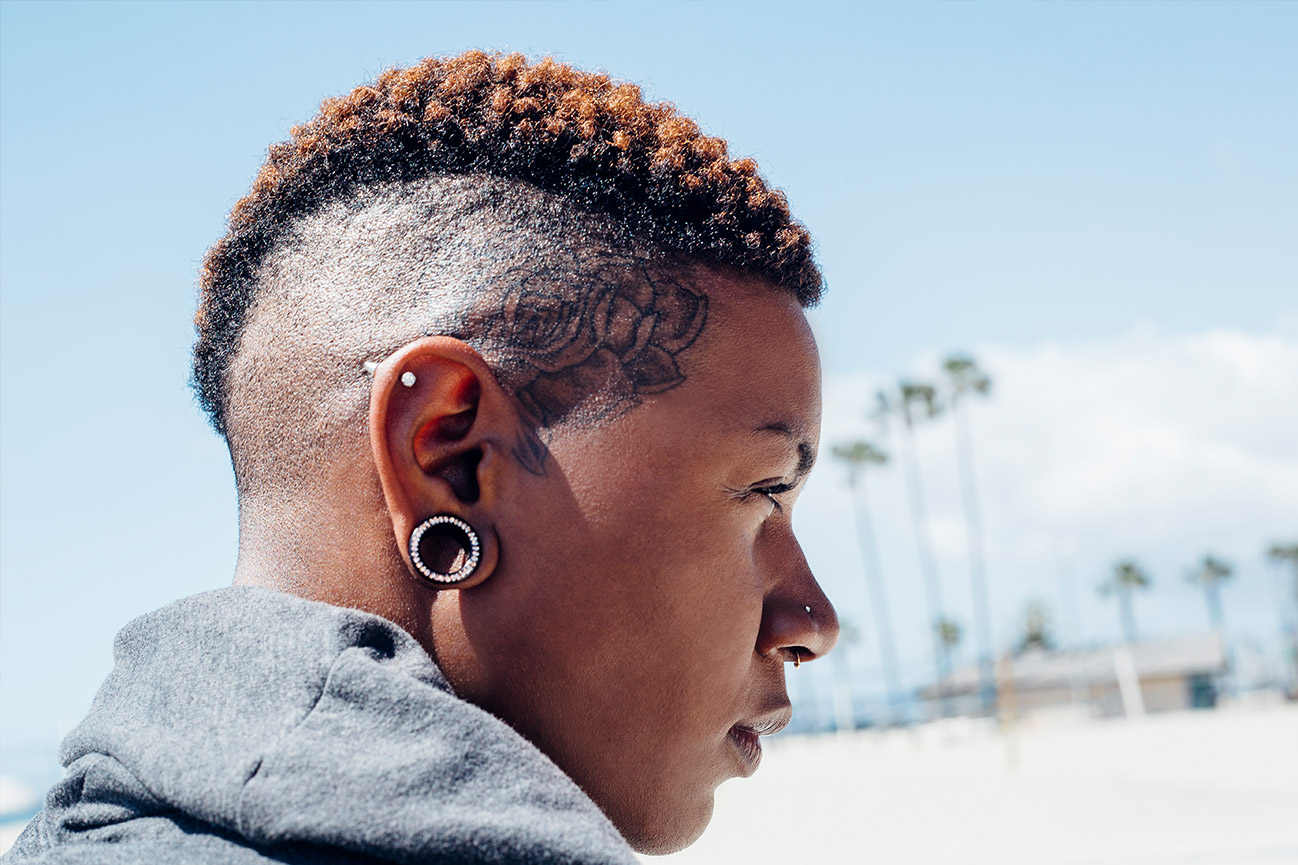Tattoos are a vibrant way to express yourself, commemorate milestones, or simply adorn your body with beautiful art. However, it’s important to be aware of the potential risks alongside the rewards – and that includes the possibility of tattoo ink allergies.
While not everyone will experience them, understanding these allergies is vital for a safe and enjoyable tattoo experience.
What Are Tattoo Ink Allergies?
A tattoo ink allergy is an immune system reaction to specific ingredients within tattoo ink. It’s your body’s way of saying it doesn’t like something foreign being injected beneath your skin. These reactions can range from mild to severe and can develop immediately after getting a tattoo or even years later.
The Culprits: Common Allergens in Tattoo Ink
Not all tattoo inks are created equal. These are some common ingredients that can trigger allergic reactions:
Heavy Metals: Metals like mercury (red inks), cobalt (blue inks), nickel (various colors), and chromium (green inks) are known culprits.
Organic Pigments: Some organic pigments, particularly certain reds, can trigger sensitivities.
Additives: Ingredients like preservatives and binding agents can contribute to reactions in some individuals.
Signs & Symptoms: How to Recognize an Ink Allergy
Allergic reactions to tattoo ink can manifest in several ways:
Rash: The most common symptom is a red, itchy rash at the tattoo site that goes beyond typical healing discomfort.
Raised bumps: The area may develop elevated bumps or nodules.
Swelling: The tattooed area may become swollen or inflamed.
Blistering: Fluid-filled blisters can form in more severe cases.
Scaling or Dryness: The skin may become abnormally dry or scaly.
Delayed Reactions
Sometimes, an ink allergy won’t appear immediately. Reactions can occur months or years later, often triggered by sun exposure that reactivates the pigments. This is why long-term vigilance is key.
Prevention is Key: Protecting Yourself
The best defense is a proactive approach. Here’s what you can do to minimize your risk:
Patch Test: Ask your tattoo artist if they offer patch tests. This involves applying a small amount of the chosen ink to your skin to detect potential reactions.
High-Quality Inks: Insist on your tattoo artist using reputable, high-quality inks. Check the ingredient list and ask for their safety standards, including how they source their inks.
Professional & Reputable Studios: Always choose a licensed, reputable tattoo studio with high cleanliness standards. If you’re looking for a skilled tattoo artist, do your research and check reviews before making your decision.
Aftercare Is Crucial: Proper aftercare is essential to prevent infection and helps identify any adverse reactions early on. Follow your artist’s instructions diligently.
What If I Have An Ink Allergy?
If you suspect an ink allergy, don’t panic. Here’s what to do:
Consult a Dermatologist: A dermatologist can diagnose an ink allergy and recommend treatment.
Medication: Topical ointments or antihistamines may provide relief from itching and inflammation.
Severe Cases: In rare, severe cases, tattoo removal might be the safest option.
Staying Informed, Staying Safe
Knowledge is power. By understanding tattoo ink allergies, taking preventive measures, and knowing when to seek help, you can make informed decisions about your body art. Remember, choosing a skilled and experienced tattoo artist, prioritizing high-quality inks, and caring for your tattoos responsibly are crucial aspects of a safe and enjoyable tattoo experience.
Understanding Ink Color & Risks
It’s important to realize that some colors are generally associated with higher risks of reactions:
Red: Red inks have historically been the most notorious for causing allergies, particularly older formulations containing mercury. Be extra cautious with vibrant reds, and discuss safer alternatives with your tattoo artist.
Yellow: Certain yellow inks may contain cadmium sulfide, which can also trigger allergic reactions.
Bright Colors: Fluorescent inks and those with a UV component may contain ingredients more likely to cause sensitivities.
These aren’t hard and fast rules – reactions can occur with any color. It’s about being aware, asking questions, and weighing the risks.
Living with a Tattoo Ink Allergy
If you do develop a tattoo ink allergy, it doesn’t necessarily mean the end of your body art journey. Here’s how to manage it:
Managing Existing Tattoos: If your allergy is mild or localized, your dermatologist can recommend treatment to ease discomfort, allowing you to still enjoy your tattoo.
Color Considerations: For future tattoos, opt for colors less likely to trigger a reaction. Black and gray inks are typically the safest bets.
Alternative Approaches: Look into different tattoo styles. Consider scarification or branding, which (when done by a trained professional) may be an option if you’re prone to allergies. These methods don’t involve injecting foreign pigments into the skin.
Additional Factors Affecting Ink Allergies
While ingredients are the primary concern, other factors can influence your susceptibility to tattoo ink allergies:
Skin Sensitivity: If you have sensitive skin or a history of allergies, you may be at higher risk for ink allergies as well.
Immune System Health: A weakened immune system may be less equipped to handle potential allergens.
Sun Exposure: As mentioned, sunlight can sometimes reactivate pigments and trigger a delayed allergic reaction. Sun protection is vital!
Frequently Asked Questions
Let’s wrap up with some common questions potential tattoo-getters might have:
Can I become allergic to tattoos I’ve had for years?
Yes, unfortunately, delayed allergic reactions are possible. This is why it’s important to monitor your tattoos long-term, even if you had no issues initially.
Does a patch test guarantee I won’t have a reaction?
While patch tests significantly decrease your risk, they’re not foolproof. Reactions can still occur on the larger tattoo, or potentially develop later on.
Are temporary tattoos a safe alternative?
Beware that “black henna” temporary tattoos frequently contain a chemical called PPD, a known allergen that can lead to severe reactions and scarring. Opt for natural henna or alternative temporary tattoo options if considering this route.
A Word of Encouragement
While the topic of tattoo ink allergies might seem a little scary, the purpose of this guide is to empower you with information. The vast majority of people enjoy tattoos without any issues. By taking precautions, choosing a reputable tattoo artist, and staying aware of your body’s signals, you can vastly minimize your risk and enjoy your body art with confidence.
Tattoo Ink Allergies vs. Normal Healing: Knowing the Difference
It’s essential to be able to distinguish between a potential allergic reaction and the expected discomfort of the tattoo healing process. After getting a tattoo, it’s normal to experience:
Redness and Mild Swelling: The tattooed area will likely be red and slightly swollen for a few days.
Mild Itching: As your skin heals, some itching is expected.
Peeling and Scabbing: The tattoo will typically form light scabs that peel off on their own.
However, if the redness, swelling, or itching worsens over time, or if any of the symptoms previously mentioned (bumps, blisters, etc.) appear, an allergy could be the culprit.
Tattoo Allergies and Other Skin Conditions
Sometimes, a reaction at a tattoo site might not be due to a true ink allergy, but a flare-up of a pre-existing skin condition.
Psoriasis: If you have psoriasis, getting a tattoo can trigger a flare-up at the site, referred to as the Koebner phenomenon.
Eczema: Eczema-prone skin may react negatively to a tattoo wound, leading to excessive dryness, itching, or inflammation.
It’s crucial to inform your tattoo artist about any skin conditions you have before getting inked.
Should I Avoid Tattoos with a History of Allergies?
Not necessarily. The decision ultimately rests with you in consultation with your dermatologist or allergist. Here are some factors to consider:
Severity of Your Allergies: If you have a history of severe allergic reactions, the risk might outweigh the reward.
Confidence in the Artist/Studio: Working with an experienced, reputable artist prioritizing safe practices can help put your mind at ease.Your Comfort Level: Trust your instincts. If the anxiety about potential reactions is too high, it may be best to explore other forms of self-expression.
Finding the Right Balance
The world of body art is meant to be enjoyed! With a bit of awareness and preparation, most people can safely adorn themselves with tattoos. Here’s a summary of the key points:
Educate Yourself: Learn about ink ingredients and the signs of allergic reactions.
Prioritize Safety: Work with a skilled and hygienic tattoo artist in Austin, Texas who utilizes high-quality inks.
Listen to Your Body: Observe your tattoos for any unusual or prolonged reactions, and don’t hesitate to seek a doctor’s opinion.
By taking a proactive and informed approach, you can navigate the exciting world of tattoos mindfully, minimizing your risk of unpleasant surprises and reveling in your chosen body art for years to come.
Tattoo Ink Allergies: A Word of Caution
It’s important to acknowledge that even with all the precautions in the world, allergic reactions to tattoo ink can still occur unexpectedly. Sometimes, your body simply decides it doesn’t like a foreign substance beneath your skin, no matter how ‘clean’ or ‘reputable’ the inks or practices used.
This doesn’t mean you need to live in fear of tattoos! However, it’s crucial to be mentally prepared for the possibility of a reaction. If you are someone who is highly risk-averse, weigh your priorities carefully before making a permanent alteration to your body.
Tattooed and Thriving: Don’t Let Allergies Hold You Back
If you love the idea of tattoos, don’t let the fear of potential allergies completely deter you. With careful planning, smart choices, and vigilance, you can still enjoy the art of tattooing. Just remember:
Start small: Consider a small, discreet tattoo in a less visible area for your first piece. This makes managing a potential reaction easier.
Choose your colors wisely: Discuss your concerns with your tattoo artist and opt for colors with a lower historical risk of reactions.
Stay alert: Monitor your tattoos closely, both in the immediate aftermath and for the long term.
Let a little bit of caution add to your enjoyment and confidence rather than taking away from the excitement of expressing yourself through body art!




